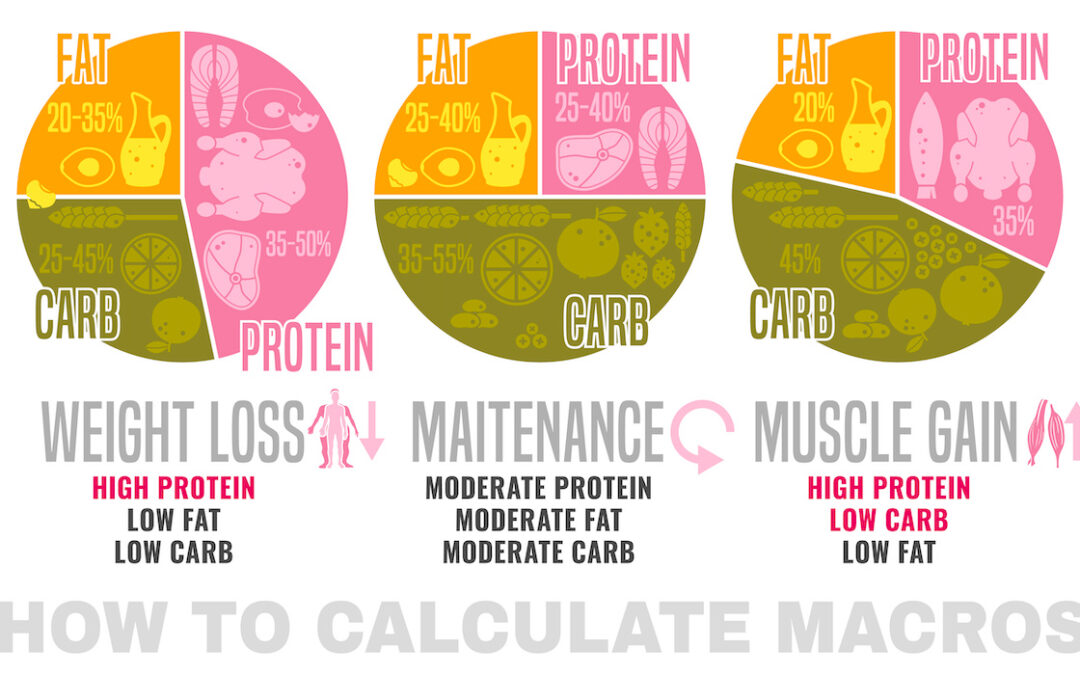Most people know that they have to eat healthy to stay in shape and keep their bodies healthy. However, not many know much about macronutrient ratios or how these markers affect their bodies and goals. This blog illuminates the importance of knowing your macronutrient ratios and guides you on how to calculate your macros for fat loss and performance.
What are Macronutrients?
Nutrients can be divided into two groups: micronutrients and macronutrients. Micronutrients are those nutrients that the body needs in smaller amounts. Vitamins and minerals are examples of micronutrients.
Macronutrients (or macros), on the other hand, are those nutrients that the body needs in large amounts. Macro comes from the Greek makros meaning long or large. Macronutrients (carbs, fats, and proteins) provide the body with energy. Energy comes from the calories ingested from each macronutrient. You need all types of macronutrients to keep yourself healthy and reduce the entropy process – the degradation of the body.
How to Calculate Your Macros
When your body has an appropriate level of macronutrients, your body functions as it’s intended to function. When your macros are out of whack, your biological age increases, your body systems can’t perform their jobs, and your body dis-eases.
Free online tools can let you know the required amount of calories and macronutrients you specifically need to be at your best. You need to use the macro calculator to know your macronutrient ratio – the proportion of fats, carbs, and proteins per meal. It’ll help you calculate your macros for fat loss and performance goals. Knowing your macronutrient ratio helps you to stay on course in your fat-loss journey, perform better, and keep your body healthy.
Knowing the macronutrient ratio of your meals is a key element in fat loss and keeping your body in great shape. The macro calculator provides you with the ideal macro ratio based on your age, sex, activity level, and diet goals. It estimates your caloric need per meal and on a daily basis.
Macros and Energy
Macronutrients are divided into carbohydrates or carbs, fats, and proteins. People like to eat without knowing the amount of energy each type of macro provides them but it’s important to know how much energy each type of macronutrient contains.
Carbohydrates and proteins contain 4 calories per gram, which means when you are eating 10 grams of carbohydrates or protein, you are eating 40 calories. Fat provides 9 calories per gram, which means when you are eating 10 grams of fat, you are eating 90 calories. Since fats are richer than carbs or proteins, they can cause weight gain if you don’t watch your portions.
Take a look at the macronutrient ratio of half a cup of cereal. When you’re eating a half cup of cereal, you are taking around 3 grams of fats, 13 grams of carbohydrates, and 3 grams of protein.
Now let’s calculate the exact amount of calories in that half cup of cereal:
- 3 g of Fats x 9 calories= 27 calories
- 13 g of Carbohydrate x 4 calories= 52 calories
- 3 g of Protein x 4 calories= 12 calories
In total, you are eating around 90 calories when you eat a half cup of cereal. Plus, you are 19 grams of all types of macros.
Macronutrient Ratio For Fat Loss And Performance
There is a delicate balance between the total energy you are taking in and burning it out based on your lifestyle, which is why is essential to calculate your calories and macros for fat loss and performance. Your macronutrient intake determines the shape of your body and your energy levels. This is why the macronutrient ratio is important for fat loss and performance.
Simultaneously, losing weight requires a caloric deficiency and a certain macronutrient ratio. The appropriate ratio can help you regulate your calorie intake, so you eat the macros and quantities you need. On the other hand, if you run want to run marathons or bodybuild, your macronutrient ratio and caloric intake are totally different.
You must time and plan your meals according to your workouts and goals. By using the macro calculator, you can plan your diet knowing how much carbs, proteins, fats, and calories you need to consume to fulfill your macronutrient ratio.
Conclusion:
Calculate your macros for fat loss and performance by using the macro calculator. You’ll get the estimated amount of calories and the ratio of carbs, proteins, and fats that you need. Establishing an appropriate macronutrient ratio based on your biometrics and goals can help keep your body healthy, reduce your biological age, and succeed in your fat-loss fitness efforts.
To a Fitter Healthier You,
The Fitness Wellness Mentor



